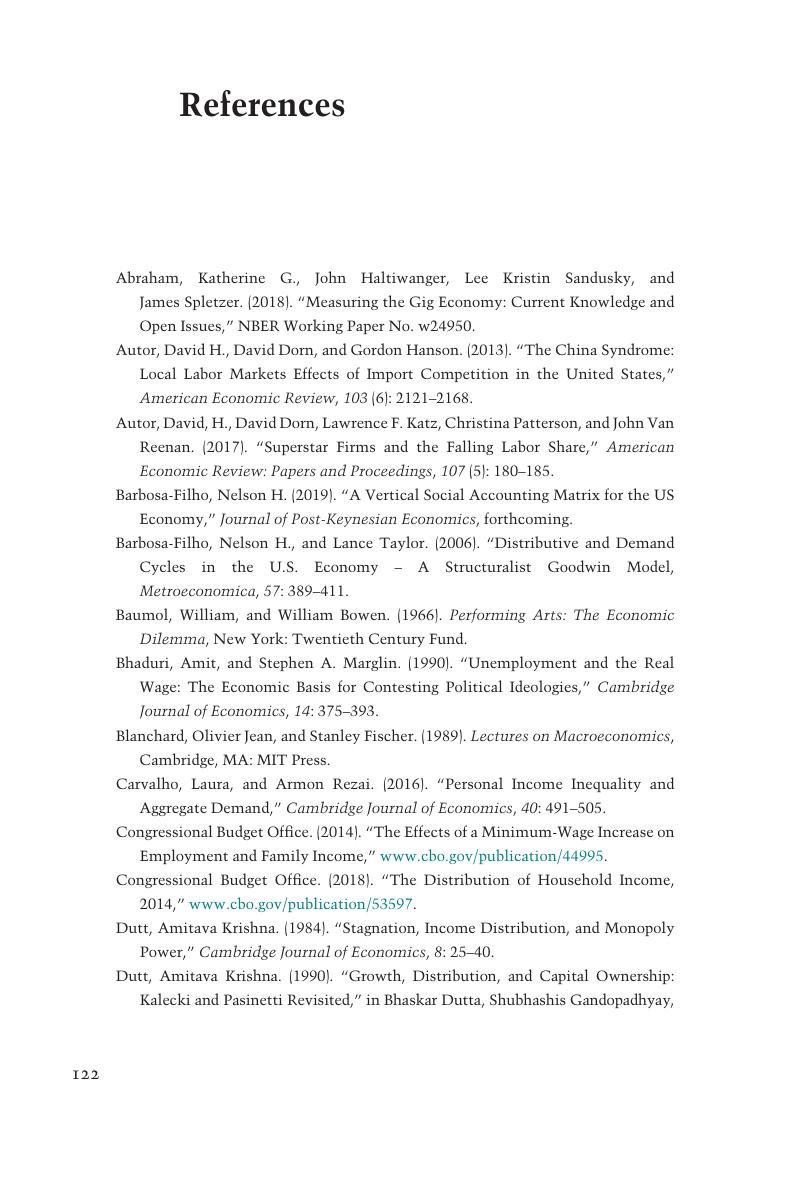 Macroeconomic Inequality from Reagan to Trump
Macroeconomic Inequality from Reagan to Trump Book contents
- Macroeconomic Inequality from Reagan to Trump
- Studies in New Economic Thinking
- Macroeconomic Inequality from Reagan to Trump
- Copyright page
- Contents
- Figures
- Tables
- Acknowledgments
- Introduction
- 1 Decades of Income Inequality
- 2 Macroeconomic Income Distribution
- 3 “Capital,” Capital Gains, Capitalization, and Wealth
- 4 Sectoral Stagnation, Flat Productivity, and Lagging Real Wages
- 5 Institutions and Models for Maldistribution
- 6 Possible Future Prospects
- References
- Index
- References
References
Published online by Cambridge University Press: 31 July 2020
- Macroeconomic Inequality from Reagan to Trump
- Studies in New Economic Thinking
- Macroeconomic Inequality from Reagan to Trump
- Copyright page
- Contents
- Figures
- Tables
- Acknowledgments
- Introduction
- 1 Decades of Income Inequality
- 2 Macroeconomic Income Distribution
- 3 “Capital,” Capital Gains, Capitalization, and Wealth
- 4 Sectoral Stagnation, Flat Productivity, and Lagging Real Wages
- 5 Institutions and Models for Maldistribution
- 6 Possible Future Prospects
- References
- Index
- References
Summary

- Type
- Chapter
- Information
- Macroeconomic Inequality from Reagan to TrumpMarket Power, Wage Repression, Asset Price Inflation, and Industrial Decline, pp. 122 - 127Publisher: Cambridge University PressPrint publication year: 2020


